Celery Science
Celery Science
Discovery Place Nature
Plants are living things and eat just like us…but not in the same way! They don’t chow down on burgers and fries. Instead, they take in nutrients through their roots and up their veins to make their own sugar.
This time of year, plants and trees look like they are dwindling away, but they actually live through the coldest times of the year. Their root and vascular systems allow them to still tap into the nutrients they need to survive all winter long.
Let’s learn how a plant’s vascular system works with an experiment you can do right in your kitchen!
Materials:
- Clear cups or glasses
- Celery (with leafy tops)
- Water
- Liquid food coloring – any color you like! Red, blue and green work best for this experiment

Experiment:
1. Pour water into your clear cups.
2. Drop in some of your food coloring. It might even be cool to do multiple glasses with different colors!
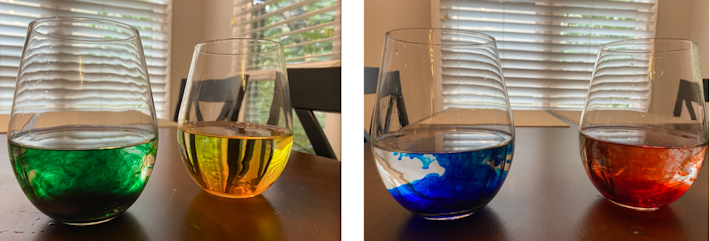
3. Drop in your celery, leaves sticking up out of the cup. Make sure the bottom stem of your celery has good access to your colored water.
4. Let it soak! Leave your celery in the cup through the day and overnight.
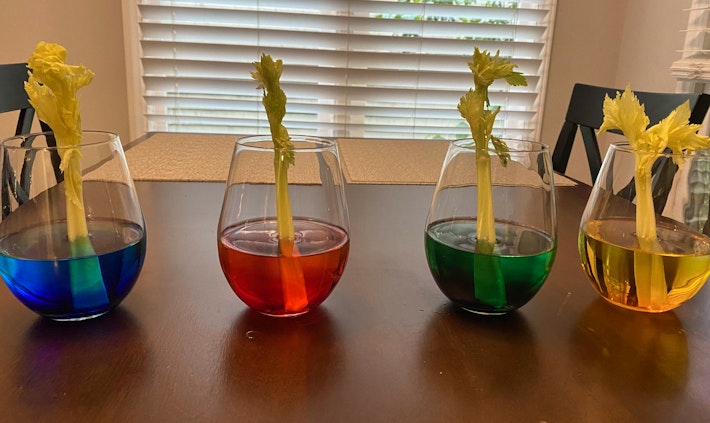
5. Be a plant scientist and write-up your hypothesis: What do you think will happen to the celery and why?
6. Check on your celery sticks every few hours. What do you see?
7. Document your results every few hours with pictures or handwritten notes using this table:

Initially, you’ll see some of the tubes inside the celery highlighted in the color of your food dye. This is phloem and xylem, the water and nutrient veins of the plant!
This is what ours looked like. Is yours the same or different?
These pictures are first check after 2 hours:
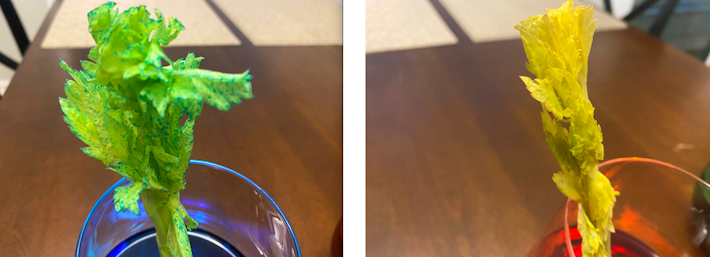
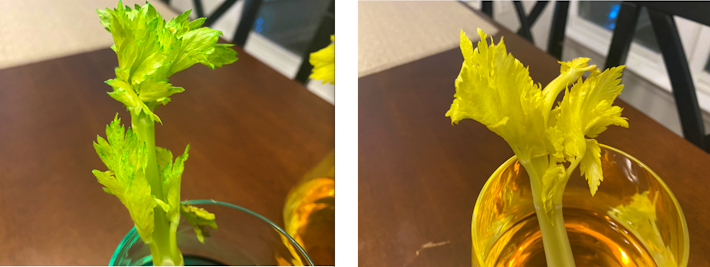
After a few hours the leafy parts will start to absorb the color more, changing color themselves too! This shows how nutrients transfer and move through the plant. The food dye helps make this otherwise invisible process more visible and obvious to us.
These pictures are last check the next morning:


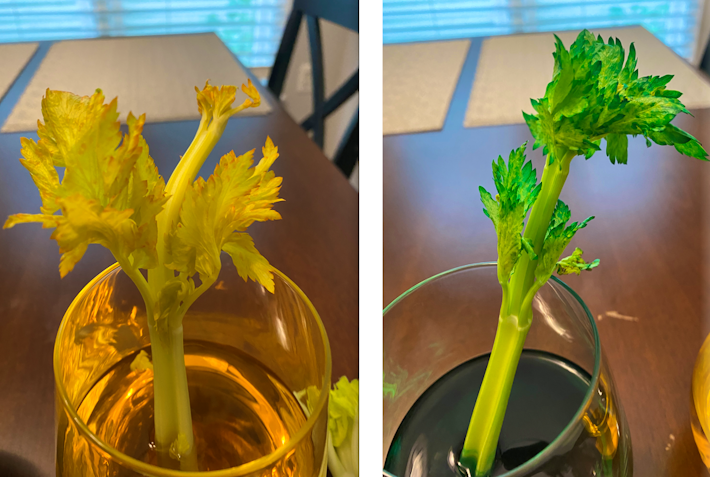
The Science:
How did that happen?!
Celery, like all plants, has a root and vascular system to soak in water and nutrients to survive. What’s cool about celery is you can easily see the tubes, or veins, at the bottom of its stem.
You’re looking at xylem and phloem. Xylem is the main vein that carries water from the roots, up the stem and to the leaves. Phloem carries nutrients and the sugar the plant makes from the leaves to other parts of the plant.
The xylem vein picked up water from your cup and transported it up the stem and into the leaves. Because we dyed our water, the stem and leaves were able to show us the water’s movement through the leaves. Cool right?!
Plant Survival:
These veins are crucial for the plant to survive. Xylem needs to get water into the leaves so they can undergo photosynthesis, the process in which the plant makes food!
Water, sunlight and carbon dioxide are taken into the leaves to make sugar and oxygen. The plant uses that sugar for energy, so it needs phloem to take that food to the rest of the plant. All of this happens in the chloroplasts, or the green part of the leaves.

